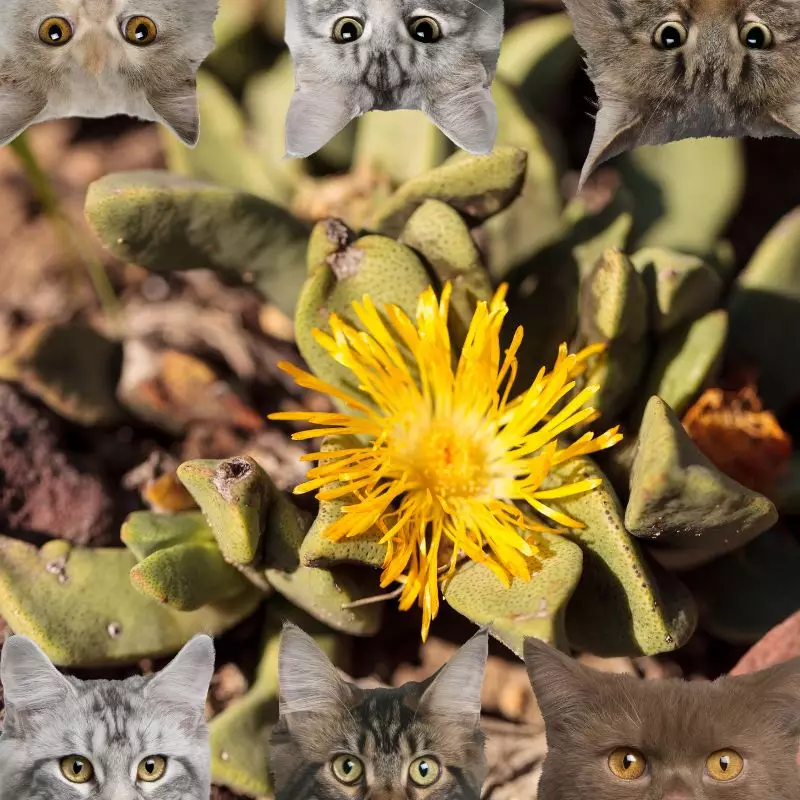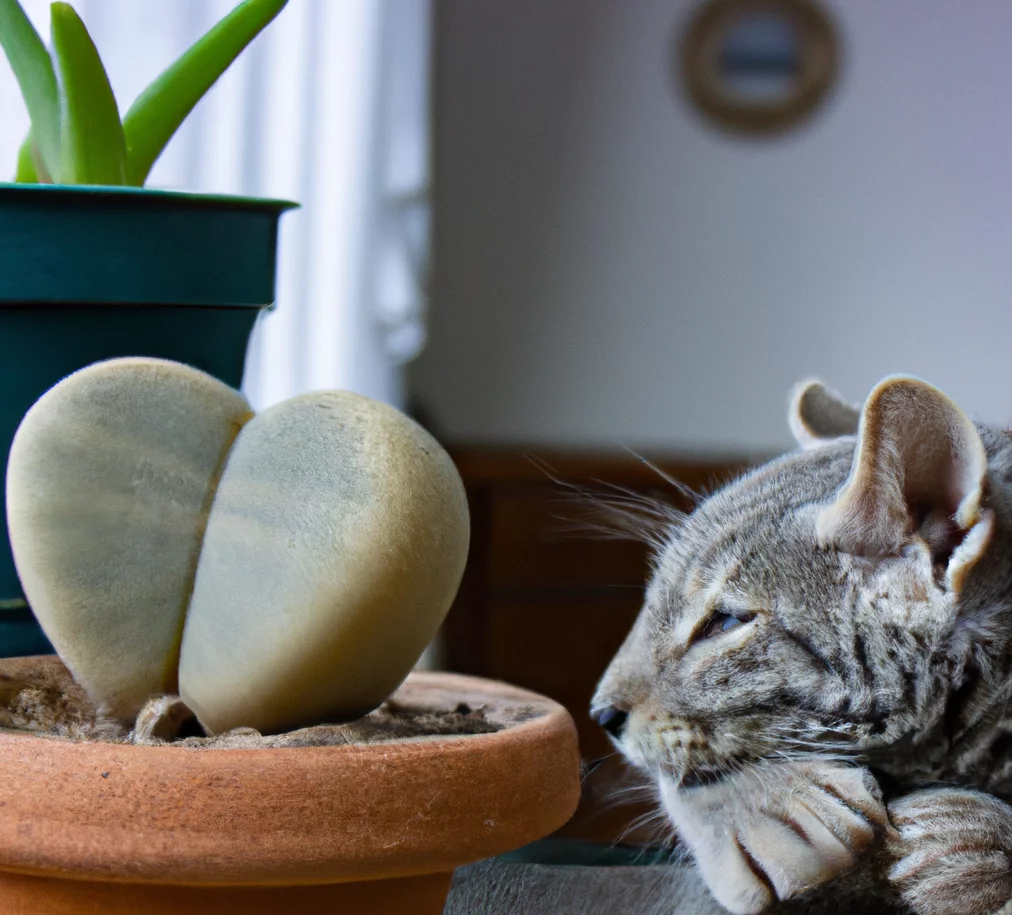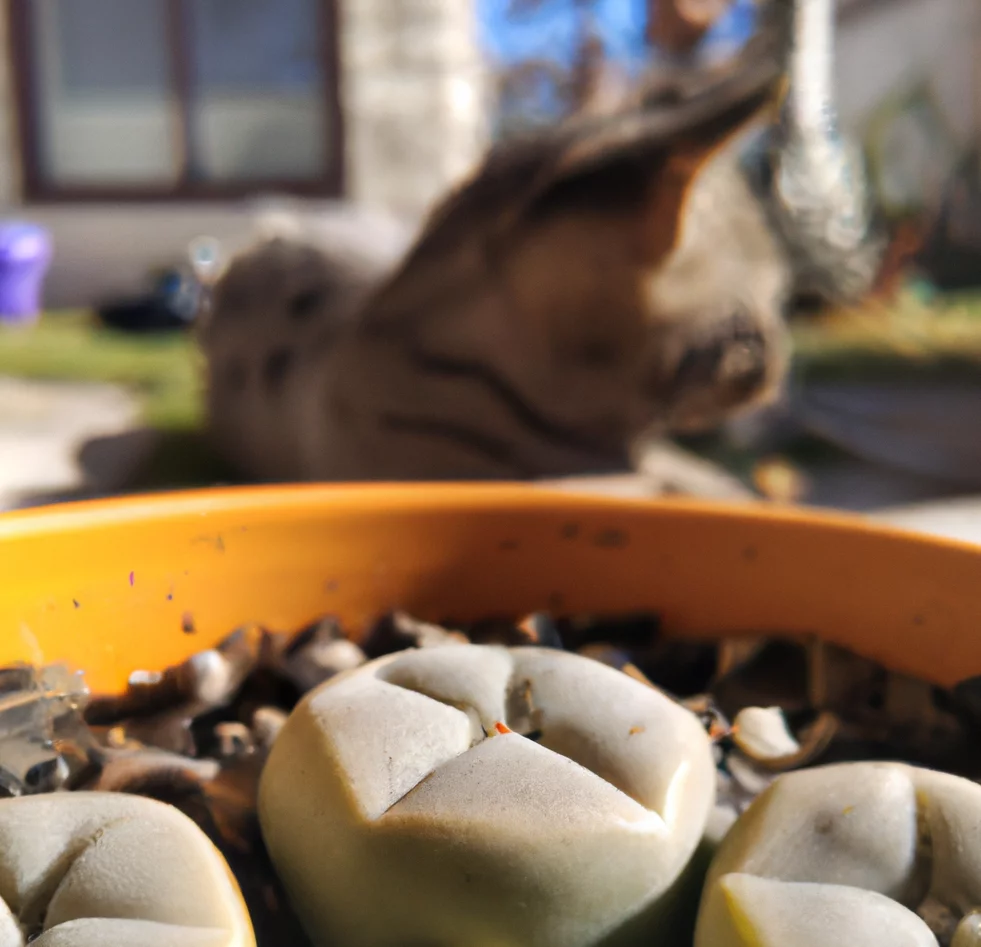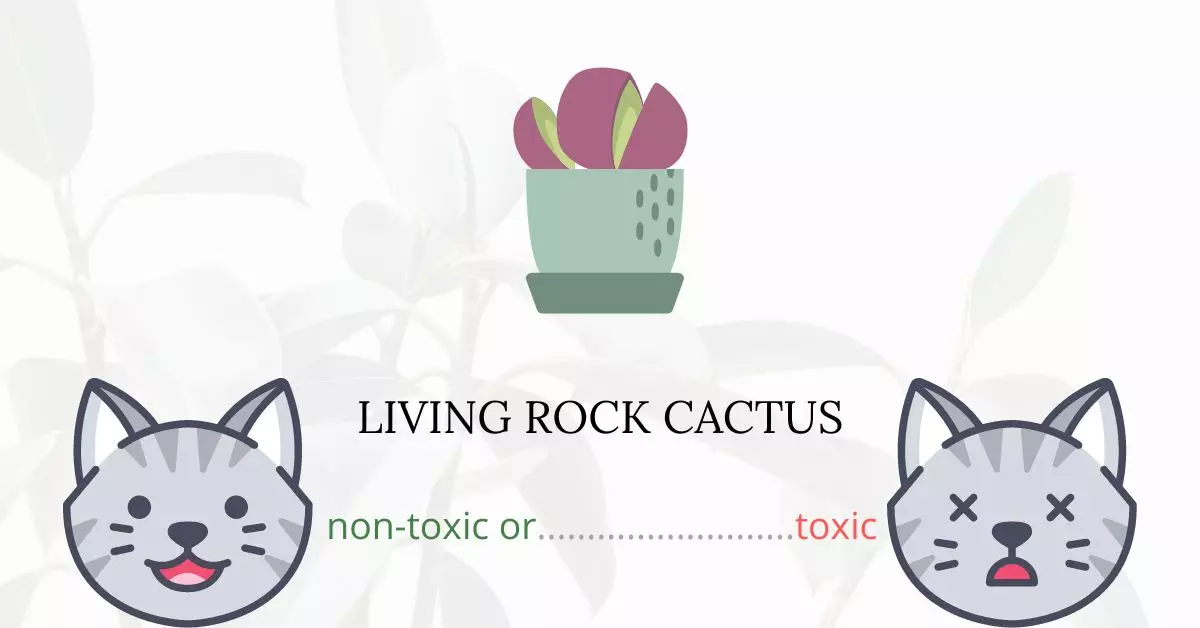The Living Rock Cactus, a member of the Aizoaceae Family, is not toxic to cats.
This conclusion has been drawn after rigorous research and collaboration with a team of experienced DVMs (doctors of veterinary medicine). Their invaluable insights enable us to provide accurate and up-to-date information regarding the potential risks of various plants to feline health, with a focus in this instance on the Living Rock Cactus. To further ensure accuracy, we have also consulted high-authority websites such as the ASPCA and PetMD for comprehensive information on each plant.
Rest assured, if you have the Living Rock Cactus growing indoors, your pets are safe.
Can Cats Eat Living Rock Cactus?

If your cat takes a few bites of a living rock cactus, nothing bad will happen. It’s crucial to remember, though, that any plant, poisonous or not, can harm animals.
Since cats do not have the required enzymes to digest plant matter in their stomachs, they are prone to indigestion if they happen to eat huge amounts of plants. It may also lead to more gastrointestinal issues and induce symptoms of vomiting and diarrhea.
Even non-toxic plants can upset the stomach when consumed, particularly in animals with sensitive stomachs. Even the leaves of other plants may contain toxins or pesticides, which can further harm animals. Pets should never be let inside the house where there are plants to consume.
What is Living Rock Cactus?

A native of the Eastern Cape of South Africa, the living rock cactus is a member of Aizoaceae family. It is also commonly called mimicry plant or African living rock. Its scientific name is Pleiospilos bolusii.
It is a small, stemless succulent perennial with leaves that are practically triangular in shape, fused at the base, and up to 8 cm (3 in) long by 15 cm (6 in) broad. The flowers are frequently smelled of coconut, and the blooming season lasts from August to September.
The plant belongs to a group of species known as mesembs that are grown for their appearance resembling rocks.
Keeping Cats Away From Living Rock Cactus

To prevent your cats from harming your plants, use wired or metal cages. Most importantly, using wired cages allow your plant to get the sunlight and air circulation it needs while it’s in a safe place.
Placing your plants in a cage guarantees that they are protected from the curious paws of your cats. Use attractive bird cages to safeguard your plants and pets in style if you don’t like the way wired cages will look in your home.
Give your cat its own plant. There are fortunately many indoor plants that your cats can safely enjoy. In order for them to respect your plants, you must give them their own plant. Cat Grass, Catnip, Catmint, and Boston Fern are among the houseplants that cats most frequently adore.
Another way to stop your cats from destroying your plants or the soil surrounding them, place sticks or skewers. To prevent cats from messing with your plant, you can also sprinkle small rocks on the soil that have sharp edges.
Plants to Avoid For Your Cats
If you are a cat owner and unsure if the plants growing in your yard are harmful to your cats, check out this list of toxic plants for cats. You can also check our list of non-toxic plants for cats.





